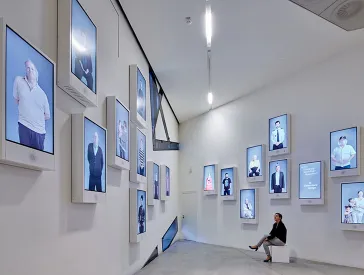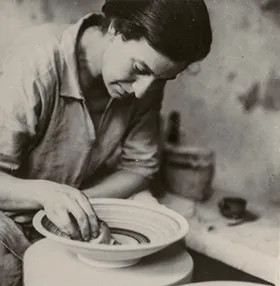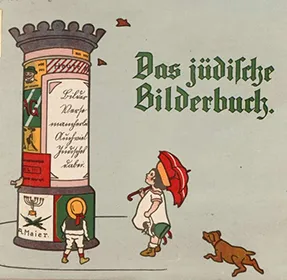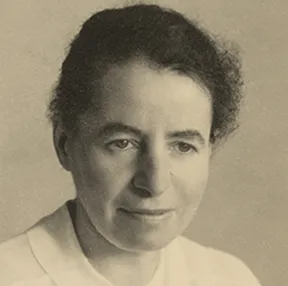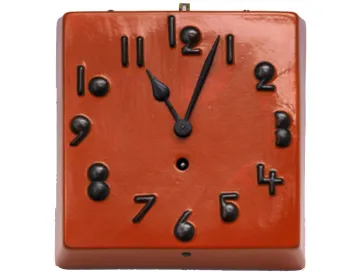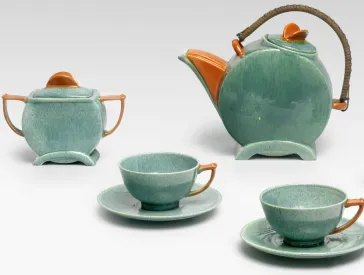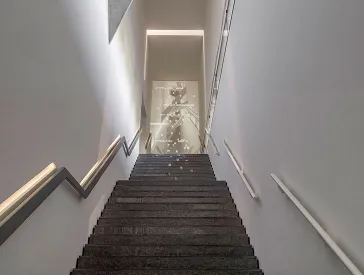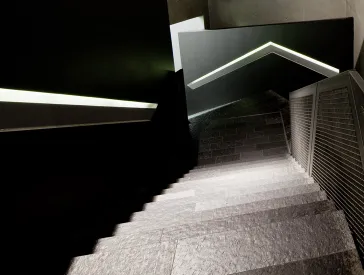
Defiance
Jewish Women and Design in the Modern Era: exhibition
“German women wanted to show what a cultural force they had become, what they were achieving in all fields, sometimes in a completely new, independently creative way. An unforgettable image. […] We Jewish women could also walk through this exhibition filled with modest pride. Our work was in no way inferior to that of our sisters of other faiths.”
This is how Ella Seligmann described the opening of The Exhibition of Women at Home and at Work in Berlin in February 1912. One year later, in 1933, the National Socialist regime began to systematically destroy the careers and lives of many of these women.
The exhibition at the Jewish Museum Berlin is the first to honor the work of German-Jewish craftswomen who, during a time marked by exclusion and upheaval, forged their own paths. It presents the lives and works of more than 60 Jewish female designers and demonstrates how they overcame societal barriers to fight for change and visibility — and how they paved the way for other women in the process.
Past exhibition
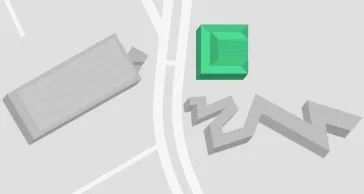
Where
Old Building, level 1
Lindenstraße 9–14, 10969 Berlin
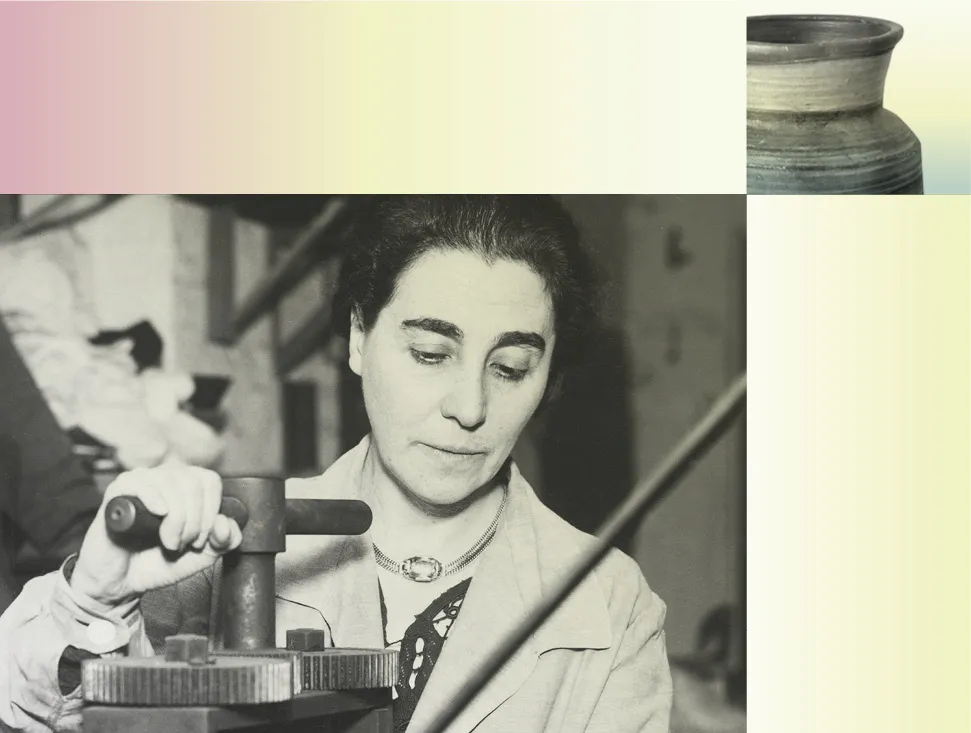
Defiance: Jewish Women and Design in the Modern Era
Exhibition Webpage
Current page: Defiance: Jewish Women and Design in the Modern Era (11 Jul to 23 Nov 2025): visual and audio resources relating to the exhibition and information in German Sign Language
Publications
Exhibition catalog: 2025, in German
Digital Content
- Jewish Women and Design in the Modern Era: All biographies at a glance
- Jewish Places: Important places where the Jewish designers lived and worked on our interactive map
- Do you know Eva Samuel?: How the research for the exhibition took off
- Small Puppets – Strong Women: community project accompanying the exhibition (in German)
- Objects from the exhibition in our collection online in German
See also
- Paper doll based on a costume design by Dodo (1907–1998): Create your own movable paper doll!
- Beaded bracelet based on a design by Emma Trietsch (1876–1933): Make your own beaded bracelet!
- Fashion paper doll based on designs by Irene Saltern (1911–2005): Dress your own fashion paper doll!
- Jewish Women Ceramists from Germany after 1933: Online feature on Google Arts & Culture, in German
Sneek Peak into the Exhibition
Information on the accessability of the exhibition
- All exhibition texts are available in German and English.
- There is no information in Plain Language.
- There is no information in British Sign Language (BSL) or International Sign Language (ISL).
- The opening evening will be translated into German Sign Language (GSL).
- There is no hearing amplification in the form of induction systems and neck ring loops.
- The exhibition is accessible.
- Objects and texts are mostly legible from a seated position.
- There are places to sit and rest at various points in the exhibition#.
- Wheelchairs can be borrowed free of charge from the checkroom. You can reserve the wheelchairs in advance by sending an e-mail to besucherservice@jmberlin.de.
- The works of art in the exhibition are not uniformly brightly lit.
- The exhibition texts are predominantly visually rich in contrast.
- There is neither a floor guidance system, nor tactile models in the exhibition.
- There are neither flashing lights, nor loud sound in the exhibition spaces.
- All film stations in the exhibition are silent. All films have German and English subtitles.
You can find up-to-date information on the museum’s accessibility and facilities on our website.
Do you have any further questions or comments on accessibility? Then please write to us using our contact form.
Exhibition Information at a Glance
- When 11 Jul to 23 Nov 2025
- Where Old Building, level 1
Lindenstraße 9–14, 10969 Berlin
See Location on Map
Credits
Director
Hetty Berg
Management
Lars Bahners (Verwaltung), Julia Friedrich (Sammlung), Barbara Thiele (Vermittlung und Digitales)
Executive Assistants and Aides
Milena Fernando, Mathias Groß, Vera von Lehsten, Eva Weinreich
Curator
Michal S. Friedlander
Curatorial Advisor
Martina Lüdicke
Exhibition Manager
Deniz Roth
Project Assistant
Julia Dellith
Student Assistant
Laura Schummers
Voluntary Service
Finn Ferschke, Luise Orth
Head of Exhibitions
Nina Schallenberg
Collection Managemet
Katharina Wippermann (Leitung), Ulrike Gast (Registrar), Iris Blochel-Dittrich, Birgit Maurer-Porat, Valeska Wolfgram (Dokumentation)
Conservators
Barbara Decker, Stephan Lohrengel (paper), Rüdiger Tertel (metal), Ava Hermann, Ines Zimmermann (textile)
Exhibition Design (concept, architectur, graphic design, production management)
Anschlaege.de, Studio for Design
Marketing Campaign
Visual Space Agency, Julia Volkmar
Studio Bens, Jens Ludewig
Exhibition Texts and Copyediting
Michal S. Friedlander (texts), Martina Lüdicke, Marie Naumann, Katharina Wulffius (editing), Henriette Kolb, Anika Reichwald (copyediting)
Translationand and Translation Copyediting
Allison Brown (German-English), Michael Ebmeyer, Tanja Klapp (English-German), Kate Sturge (copyediting English)
Exhibition Construction
spreeDesign
Art Handling
Fißler & Kollegen GmbH
Media Planning and Installation
Eidotech
Painter
Lazar Malermeister GmbH
Graphic Production
Atelier Köbbert
Audio Production
Studio Platzhalter
Exhibition Lighting
Victor Kégli
Electrician
Apleona GmbH
Education and Communication
Diana Dressel (Department head), Nina Wilkens
Accompanying Programme
Daniel Wildmann (Department head), Signe Rossbach (Event curator), Maria Röger, Shlomit Tripp, Katja Vathke
Archive
Aubrey Pomerance (Department head), Franziska Bogdanov, Ulrike Neuwirth, Jörg Waßmer
Library
Monika Sommerer (Department head), Bernhard Jensen, Theresa Polley, Ernst Wittmann
Marketing and Communication
Sandra Hollmann (Department head), Katrin Möller, Ha Van Dinh, Margret Karsch, Melanie Franke, Julia Jürgens, Amelie Neumayr
Digital and Publishing
Steffen Jost (Department head), Marie Naumann, Katharina Wulffius (Catalogue), Marina Brafa (Website), Debora Antmann, David Studniberg, Charlotte Struck (Jewish Places), Lea Simon (Research trainee)
Visitor Experience and Research
Christiane Birkert (Department head), Susann Holz, Johannes Rinke
Development
Anja Butzek (Department head), Sarah Winter
FREUNDE DES JMB
Johanna Brandt (management)
Events
Yvonne Niehues (Department head), Juliane Ganzer, Katja Rein, Falk Schneider, Danny Specht-Eichler, Gesa Struve
Legal Department and Tendering
Julia Lietzmann (Department head), Sascha Brejora, Olaf Heinrich, Jonas Nondorf
Finance and Controlling
Grit Schleheider (Department head), Odette Bütow, Rainer Christoffers, Andreas Harm, Denise Kurby, Cindy Niepold, Stefan Rosin, Katja Schwarzer
Human Resources
Brit Linde-Pelz (Department head), Manuela Gümüssoy, Lilith Wendt
Facility Management
Manuela Konzack (Department head), Guido Böttcher, Mirko Dalsch, André Küter, Marcel Kühle, Janine Lehmann, Christian Michaelis, Jan Viegils
ICT
Michael Concepcion (Leitung), Anja Jauert, Kathleen Köhler, Sebastian Nadler
Exhibition Maintenance
Leitwerk Servicing
Janitor Service
FAM
Cleaning
Piepenbrock Reinigung GmbH
Sercurity
Kötter Security SE
Sponsors
With funding provided by the Hauptstadtkulturfonds.
We also thank the David Berg Foundation for their kind support.
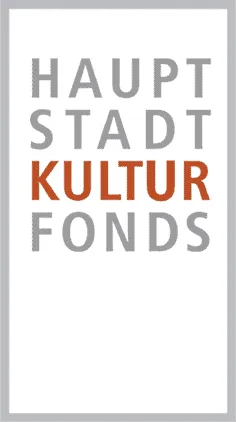

Media Cooperations


